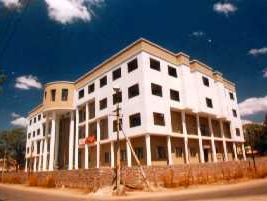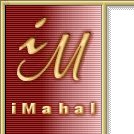|
|
 iMahal Interview Series:
iMahal Interview Series:
G. Venkataswamy
June 17, 2001

 iMahal:
Like most non-profit organizations with expansive ambitions, the Aravind focus is not on
profits, but instead is on building capacity for sustained service to a large and widespread
population. How big will be "big enough" for Aravind?
iMahal:
Like most non-profit organizations with expansive ambitions, the Aravind focus is not on
profits, but instead is on building capacity for sustained service to a large and widespread
population. How big will be "big enough" for Aravind?
 Venkataswamy:
We feel that to make an impact in the blindness rate, it is not enough if
Aravind puts all its energy into doing it as a single organization. The establishment of the
Lions Aravind Institute of Community Ophthalmology is a testament to Aravind's
commitment to fight blindness. Through the institute, Aravind works with other eye
hospitals in India and in other countries to develop their capacity for sustained service to
a large and widespread population. In this venture, there will be many more individuals
and organizations working towards a common goal and the accomplishments will be
manifold to what Aravind could achieve working as a single organization. It is our hope
that the concept will become big enough that every ophthalmologist embraces the
fundamental principles -- being patient-centered, being community-oriented, being
efficient in service delivery, charging fees that are affordable, and providing good quality
of care -- and blend these into the practice of eye care.
Venkataswamy:
We feel that to make an impact in the blindness rate, it is not enough if
Aravind puts all its energy into doing it as a single organization. The establishment of the
Lions Aravind Institute of Community Ophthalmology is a testament to Aravind's
commitment to fight blindness. Through the institute, Aravind works with other eye
hospitals in India and in other countries to develop their capacity for sustained service to
a large and widespread population. In this venture, there will be many more individuals
and organizations working towards a common goal and the accomplishments will be
manifold to what Aravind could achieve working as a single organization. It is our hope
that the concept will become big enough that every ophthalmologist embraces the
fundamental principles -- being patient-centered, being community-oriented, being
efficient in service delivery, charging fees that are affordable, and providing good quality
of care -- and blend these into the practice of eye care.

iMahal:
In 1997, you retired as Director of the Aravind Eye Hospital and became Chairman. But
we hear you are ambassador for the institution, helping it to improve its activities in
service, research, and training. In this role you are influencing not just medical
practitioners, but business academics who consider your success as an important new
model for the MBAs of the world. How did this come about?
 Venkataswamy:
Basically, they found us and pointed out to their community that the Aravind way of business was a good model for doing something new: serving the poor while remaining profitable. Well-known academics have written about us. For example, C. K. Prahalad, quoted Aravind as a model which is financially viable serving the people in need. We did not realize our strength in working with the poor people in society and still making a profit. Now we recognize that our example can be used globally to uplift poor people. As a result of this global exposure, we do get requests from people wanting to learn how we work. And teaching our business model has become a part of the administrative course of the Aravind-associated training program. Harvard University has documented the Aravind model in a case study. It is important to understand that in the health care industry, blindness is one of the major problems in all developing countries. In cataract surgery, we are able to give vision and earning capacity by a single operation. Apart from physical disability this is a big economic burden, as the people affected are losing their earnings. So, in retrospect it makes sense that our business model would be of interest to the business community: not just because of profitable service to the needy, but because of the economic benefit to the community as a whole.
Venkataswamy:
Basically, they found us and pointed out to their community that the Aravind way of business was a good model for doing something new: serving the poor while remaining profitable. Well-known academics have written about us. For example, C. K. Prahalad, quoted Aravind as a model which is financially viable serving the people in need. We did not realize our strength in working with the poor people in society and still making a profit. Now we recognize that our example can be used globally to uplift poor people. As a result of this global exposure, we do get requests from people wanting to learn how we work. And teaching our business model has become a part of the administrative course of the Aravind-associated training program. Harvard University has documented the Aravind model in a case study. It is important to understand that in the health care industry, blindness is one of the major problems in all developing countries. In cataract surgery, we are able to give vision and earning capacity by a single operation. Apart from physical disability this is a big economic burden, as the people affected are losing their earnings. So, in retrospect it makes sense that our business model would be of interest to the business community: not just because of profitable service to the needy, but because of the economic benefit to the community as a whole.

 

|
 |



